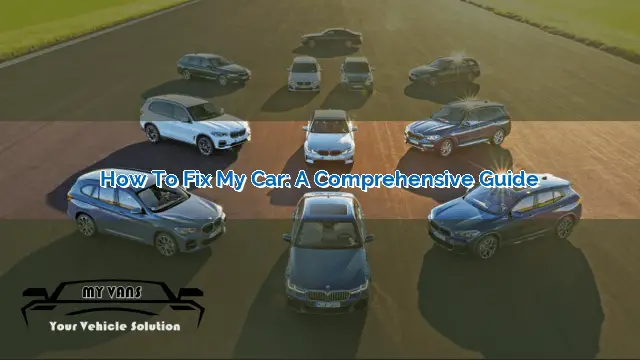
Introduction
Car troubles can be frustrating and can disrupt our daily lives. Whether it’s a flat tire, a dead battery, or an engine problem, knowing how to fix your car can save you time and money. In this article, we will provide you with a comprehensive guide on how to fix your car.
Identifying the Problem
The first step in fixing your car is identifying the problem. If your car won’t start, it could be a dead battery or a faulty starter motor. If your car is making strange noises, it could be an issue with the engine or the exhaust system. Once you have identified the problem, you can start to troubleshoot and fix it.
Tools You Will Need
Before you start fixing your car, you will need some tools. These include a jack, jack stands, lug wrench, socket set, and screwdrivers. You may also need a multimeter to check the electrical components of your car.
Fixing a Flat Tire
One of the most common car problems is a flat tire. To fix a flat tire, you will need to jack up the car and remove the lug nuts. Then, remove the flat tire and replace it with the spare tire. Tighten the lug nuts and lower the jack. Make sure to get the flat tire repaired or replaced as soon as possible.
Jumpstarting a Dead Battery
If your car won’t start because of a dead battery, you can jumpstart it using jumper cables and another car. Connect the red cable to the positive terminal of the dead battery and the other end to the positive terminal of the working battery. Then, connect the black cable to the negative terminal of the working battery and the other end to a metal part of the dead car’s engine. Start the working car and let it run for a few minutes. Then, try starting the dead car.
Replacing a Faulty Starter Motor
If your car won’t start and jumpstarting it doesn’t work, the problem could be a faulty starter motor. To replace the starter motor, disconnect the battery and remove the bolts that hold the starter in place. Then, remove the starter and replace it with a new one. Connect the battery and test the new starter.
Fixing Engine Problems
Engine problems can be more complex and may require the help of a mechanic. However, if you have some knowledge of car engines, you can try to fix minor problems such as changing the spark plugs or replacing the air filter. Make sure to consult your car’s manual or seek professional help if you are unsure.
Preventing Car Problems
The best way to fix car problems is to prevent them from happening in the first place. Regular maintenance such as oil changes, tire rotations, and brake inspections can help keep your car running smoothly. Make sure to follow your car’s maintenance schedule and address any issues as soon as they arise.
Conclusion
Fixing your car can be a daunting task, but with the right tools and knowledge, you can save time and money. Remember to identify the problem, use the right tools, and take safety precautions. Regular maintenance can also help prevent car problems from happening. If you are unsure or need help, don’t hesitate to seek professional assistance.
 MyVans Your Vehicle Solution
MyVans Your Vehicle Solution